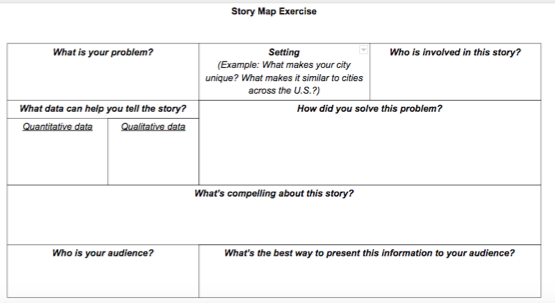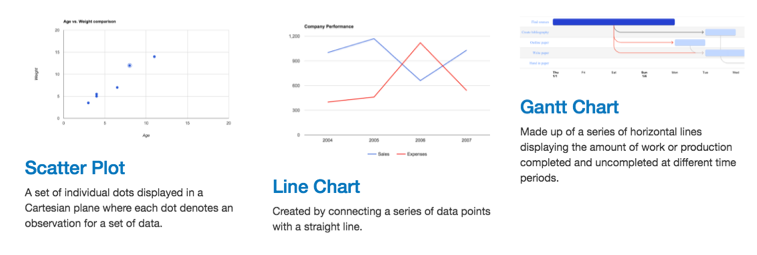Share your story and success!
Share the results
Storytelling
An integral step in your strategy is sharing the results of your pilot or policy change with your community. This includes developing messaging around the work of your organization and creating a plan to disseminate your stories. Why tell stories about your work?
Inform and/or understand a subject or situation
Give needed context of data or bits of information
Relatable stories are memorable for readers/viewers
Readers or viewers will see the information as more compelling when there is a demonstrated and relatable change or impact on themselves or their friends, neighbors, and colleagues. Stories are about people and government is fundamentally about helping people. So tell the stories of the people you and your city colleagues helped.
Keep these tips in mind as you develop your story with your team:
What were your findings and why should anyone care? Tell your audience how the problem was solved. What has the impact been on residents and city staff to date? What was the success and were there multiple successes along the way. If you have preliminary results or data showing improvement to share, this is the time to do it.
Who was involved and impacted? Review the list of stakeholders. How were each of them impacted by the program? Humanize your story and impact by adding additional voices. These voices can be one of the following:
A person or family who was positively affected by the change/success.
An involved third-party describing both the problem and the solution (i.e., an organization, nonprofit providers, business, trade association, sports team, etc.) who is part of the community that the government worked with on the change/success.
Someone from the government itself who can speak about the change/success.
Tell more about your city. Describe your city including population, demographics, industries, etc. What are its challenges? What is it known for? What makes it unique? How is it similar or different from other cities in the US?
Describe your city’s challenge. Write out the challenge your city is facing (as defined in your problem statement). How does it affect residents? How does this problem affect the work of city staff members?
Add the details. Provide details on your applied research strategy. Talk about what your city has done n the past to resolve the issue. Discuss how your strategy has changed when you began to adopt this approach. Was money saved or invested?
Use this story map exercise to organize your thoughts and guarantee that you include all of the elements of a traditional story.
After you develop your messaging, create a communications/marketing and outreach strategy designed to spread your message. Your strategy should walk you through the following key activities.
Identify and profile your audience. When creating and disseminating your message, it is always good to think about your audience. Who exactly would be interested in what you have to say? The general population of the city? People who work in nonprofits? Business owners? It matters because not everyone who lives in a city may be the target of the information. Business owners may be more interested in data showing effects on the business district than others and so on. We will cover this later, but this step will also help you to think of the most effective way to reach your audience.
Define your call to action (if you have one). Spend some time considering why you are interested in telling your story. Do you simply want to update the public on your progress or celebrate your successes? Are you interested in your audience changing its behavior or supporting a specific initiative being launched by your organization? If you want to have your audience act or behave in a certain way, be specific and incorporate it in your messaging.
Select performance measures. Think about how you would determine if your campaign is successful and select appropriate performance measures. You will revisit these measures at the end of your campaign/communications plan implementation to determine whether you need to modify your communications and outreach strategy for the future.
Methods to communicate your story. There are many ways to communicate success of your project. Here are some suggestions on reaching audiences. It is important to determine which methods are the most effective for your desired audience to receive information. Do your research. (Pew Research Center has excellent studies on the reach of media, digital media, and marketing.) For example, if seniors are your target population and they are less inclined to use Instagram (that is true), you may want to consider Facebook or the nightly local news, both of which are used more often by seniors. Below is a list of some methods and tools you can use:
Press releases to local newspapers and tv stations.
Short smart phone videos: A great way to engage an audience is through video. Ask one question of someone who is part of the story. Maybe there is a social worker who can discuss hunger in your city. These videos can be reused on multiple platforms.
Long-form writing.
Telling individual stories through a series of photos and short narratives for publication on Facebook or Instagram.
Op-eds/opinion pieces placed in the local paper.
Email updates to your list.
Connecting with appropriate organizations that are invested in the topic and work with the community and ask them to disseminate information to their members
Employing “Word of Mouth” (WOM) tactics by creating townhalls or free events for residents to attend in their own neighborhoods.
Determine the type of collateral. Usually, campaigns that target residents require several avenues to reach them. People are not always in the same place or space. Having a keen understanding of your audience will assist you with your choices on what needs to be developed. Sometimes that means images for social media, a one page flier that gives people information on attending an event or an in-depth brochure.
Implement your strategy. Keep in mind, strategies can be fluid. Sometimes something may not turn out as expected even if during planning sessions, it was “supposed to.” It is ok. You can analyze what happened during a debrief session and once your surveys and other measurements have been finalized.
Visualizations
With the right visualization, you can review and share information, insights, analysis, performance, and trends, all of which is valuable to a cross-section of the public. But which visualization is right for you? To choose the right type of chart/graph, determine the type of question you want to answer. Some common chart types are below and more information can be found here.

Explore additional analytical techniques
During the goal-setting phase, you established output, outcome, and implementation measures. Based on the results of your pilot, you may need to adjust your measures. With the pilot data in hand, you may have some ideas of how future analyses could be different and potentially improve the quality of your program. Take some time to brainstorm other relevant datasets that you did not have the time to pursue earlier, including messy departmental data that needs more attention or sources of public data from the state and federal government, nonprofits, and even private companies that could supplement your understanding of an issue. Using machine learning techniques, you might be able to better predict demand for homeless services using NOAA weather forecasts, preempt water main breaks using soil stratigraphy, or invest in economic development by monitoring real estate listing data.
Advanced analytical techniques can also help your implementation run more effectively by integrating data-informed targeting and decision tools into the process. By automating routine workflows and surfacing subtle trends, these tools can help you iterate in a more precise manner and provide key strategic guidance to front-line employees that would otherwise be unavailable. These sorts of data-science-enhanced processes can be classified as one of six project types, as explored further by the New Orleans, LA, "NOLAlytics" team. For more guidance on scoping a similar project, the GovEx advanced analytics scoping guide gives you a step-by-step overview of how to be successful.
Use the space below to list your ideas for possible advanced analytics projects by type:
| Type of project | Ideas |
|---|---|
| Finding the needle in the haystack | |
| Prioritizing for impact | |
| Early warning tools | |
| Better, quicker decisions | |
| Optimizing resource allocation | |
| Experimenting for what works |
Keep the feedback loop going
Gather information on public sentiment about policy change through focus groups, surveys, and public meetings led by advisory group members. Note whether new information is available that can help analyze or contextualize your progress (e.g., federal or state data, reports). Share the results of your pilot and the policy change process with other cities and researchers.